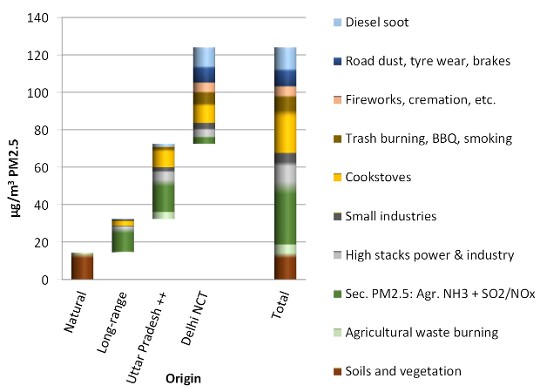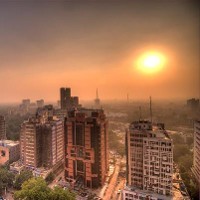The Sources of Air Pollution in Delhi
A joint study between IIASA and Indian partners shows that cleaning up the air in Delhi requires a smart mix of measures that take into account the multiple sources of PM2.5 in Delhi and the surrounding states.
The research, found that only about 40% of PM2.5 that the average inhabitant of Delhi is exposed to originates from within the city. Instead, the majority (60%) comes from outside Delhi with half from the surrounding states of Haryana and Uttar Pradesh, a quarter from sources even further away including neighboring regions, and a quarter from natural sources.
The transport sector contributes nearly 20% of the PM2.5 in the ambient air in Delhi. Other equally important sources include the burning of biomass in cooking stoves (mainly from the surrounding rural areas); and secondary inorganic aerosols which are formed from reactions of sulfur dioxide and nitrogen oxide emissions emitted by power plants, industry and traffic with ammonia from agricultural activities.

The contributions of emission sources in and around Delhi to PM2.5 pollution in Delhi's ambient air
Key findings

Timeframe
2014 - 2016
RESEARCH PARTNERS
PUBLICATIONS


